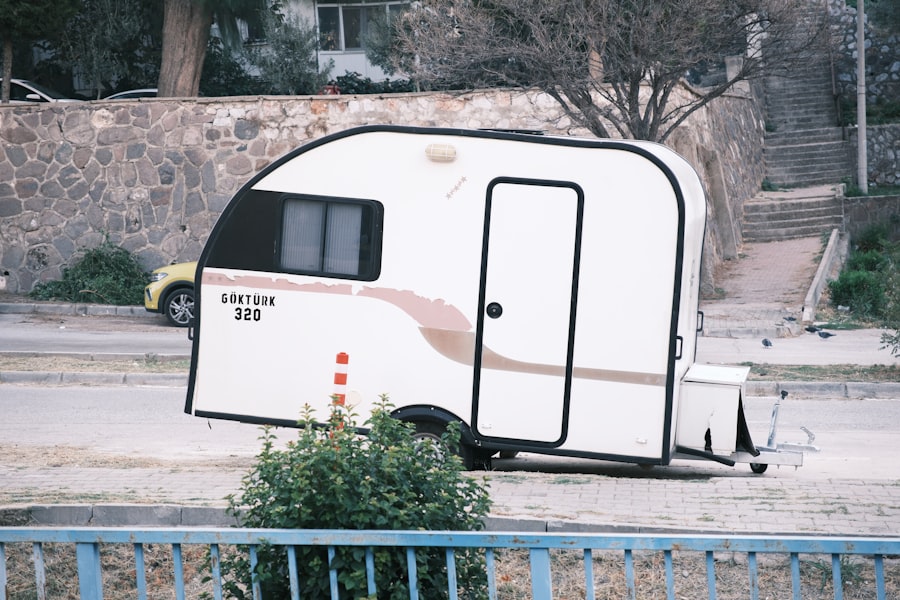The tiny house movement has gained significant traction over the past decade, appealing to those seeking a simpler, more sustainable lifestyle. At the heart of this movement lies the tiny house trailer, a mobile dwelling that offers the flexibility of travel without sacrificing the comforts of home. These compact living spaces typically range from 100 to 400 square feet and are built on trailers, allowing for easy relocation.
The appeal of tiny house trailers extends beyond mere mobility; they embody a philosophy centered around minimalism, intentional living, and environmental consciousness. Tiny house trailers come in various designs and styles, catering to diverse tastes and needs. From rustic cabins to modern minimalist structures, the aesthetic possibilities are virtually limitless.
The construction of these homes often emphasizes eco-friendly materials and energy-efficient systems, making them an attractive option for environmentally conscious individuals. As more people seek alternatives to traditional housing, tiny house trailers have emerged as a viable solution for those looking to downsize, reduce their carbon footprint, or simply embrace a more adventurous lifestyle.
Key Takeaways
- Tiny house trailers offer a mobile and minimalist living solution for those looking to downsize and live a more sustainable lifestyle.
- Choosing a tiny house trailer provides the flexibility to move your home to different locations, allowing for a change in scenery and lifestyle.
- When designing a tiny house trailer, it’s important to consider the layout and maximize the use of space to ensure functionality and comfort.
- Maximizing storage in a tiny house trailer is essential for keeping the space organized and clutter-free, utilizing creative storage solutions and multi-functional furniture.
- Making the most of limited space in a tiny house trailer requires thoughtful planning, organization, and a willingness to embrace a simpler way of living.
Benefits of Choosing a Tiny House Trailer
One of the most compelling benefits of choosing a tiny house trailer is the financial freedom it can provide. With the rising costs of real estate, many individuals and families find themselves burdened by mortgage payments and property taxes. Tiny house trailers offer a more affordable alternative, often costing significantly less than traditional homes.
This financial relief can free up resources for other pursuits, such as travel, education, or savings for future investments. Additionally, the lower utility costs associated with smaller living spaces can contribute to long-term financial stability. Another advantage of tiny house trailers is their inherent mobility.
Unlike traditional homes anchored to a specific location, tiny house trailers can be relocated with relative ease. This mobility allows homeowners to explore different environments, whether it be a serene lakeside setting or a bustling urban area. For those who enjoy traveling or working remotely, this flexibility can enhance their quality of life.
Furthermore, many tiny house owners take advantage of this mobility by participating in tiny house communities or RV parks that foster a sense of camaraderie among like-minded individuals.
Design and Layout Considerations for Tiny House Trailers

When designing a tiny house trailer, careful consideration must be given to layout and functionality. The limited square footage necessitates a thoughtful approach to space utilization. Open floor plans are often favored, as they create an illusion of spaciousness and allow for better flow between different areas of the home.
Multi-functional furniture is another key element in tiny house design; pieces that serve multiple purposes—such as a sofa bed or a foldable dining table—can maximize usability without overcrowding the space. Natural light plays a crucial role in enhancing the ambiance of a tiny house trailer. Large windows and skylights can make even the smallest spaces feel airy and inviting.
Additionally, incorporating outdoor living areas, such as decks or patios, can extend the usable space and create a seamless connection with nature. The choice of materials also impacts the overall aesthetic; lighter colors and reflective surfaces can help create an illusion of depth and openness, while darker hues may make spaces feel more confined.
Maximizing Storage in a Tiny House Trailer
| Storage Solution | Benefits |
|---|---|
| Under-bed storage | Maximizes space by utilizing the area under the bed for storage of items such as clothing, shoes, and bedding. |
| Wall-mounted shelves | Utilizes vertical space for storage of books, decorative items, and kitchen supplies. |
| Fold-down tables | Provides a functional surface for dining or working that can be folded down when not in use to save space. |
| Multipurpose furniture | Includes items such as sofa beds, ottomans with storage, and coffee tables with built-in storage to serve dual purposes. |
| Hanging organizers | Maximizes vertical space in closets and bathrooms for storage of clothing, accessories, and toiletries. |
Storage solutions are paramount in tiny house trailers, where every inch counts. Creative storage options can transform underutilized areas into functional spaces. For instance, utilizing vertical space with shelves that reach up to the ceiling can provide ample storage without encroaching on floor space.
Built-in cabinetry and hidden compartments can also be integrated into furniture pieces, such as benches or beds, to keep belongings organized and out of sight. Another effective strategy for maximizing storage is to embrace minimalism by curating possessions carefully. This involves evaluating what items are truly necessary and letting go of those that do not serve a purpose or bring joy.
By adopting a “one in, one out” policy—whereby new items replace old ones—tiny house dwellers can maintain an organized environment without feeling overwhelmed by clutter. Additionally, using clear bins or labeled containers can facilitate easy access to stored items while keeping everything neatly arranged.
Tips for Making the Most of Limited Space in a Tiny House Trailer
Living in a tiny house trailer requires adaptability and creativity when it comes to space management. One effective tip is to establish designated zones within the home for specific activities, such as cooking, working, or relaxing. This zoning helps create a sense of order and purpose within the limited space.
For example, using rugs or furniture arrangements can visually delineate areas without the need for physical barriers. Incorporating outdoor elements into daily life can also enhance the experience of living in a tiny house trailer. Creating an outdoor kitchen or dining area can expand usable space while allowing residents to enjoy nature.
Additionally, utilizing outdoor storage solutions—such as sheds or storage boxes—can help keep outdoor gear organized without cluttering the interior. Embracing outdoor living not only maximizes space but also fosters a deeper connection with the surrounding environment.
Sustainable Living in a Tiny House Trailer

Sustainability is often at the forefront of the tiny house movement, with many individuals seeking to reduce their ecological impact through conscious living choices. Tiny house trailers inherently promote sustainability by encouraging smaller living spaces that require fewer resources for construction and maintenance. Moreover, many tiny house owners opt for eco-friendly building materials, such as reclaimed wood or recycled metal, which further minimize their carbon footprint.
Energy efficiency is another critical aspect of sustainable living in tiny house trailers. Many homeowners incorporate solar panels or wind turbines to harness renewable energy sources, reducing reliance on fossil fuels. Additionally, energy-efficient appliances and fixtures—such as LED lighting and low-flow plumbing—can significantly decrease energy consumption.
Rainwater harvesting systems are also popular among tiny house dwellers, allowing them to collect and utilize rainwater for irrigation or household use.
Legal and Zoning Considerations for Tiny House Trailers
While the allure of tiny house trailers is undeniable, potential owners must navigate various legal and zoning considerations before making their dream a reality. Zoning laws vary widely by location; some municipalities have embraced tiny homes as part of their housing solutions, while others impose strict regulations that may hinder their placement. It is essential for prospective owners to research local zoning ordinances and building codes to ensure compliance.
In addition to zoning laws, there are also considerations related to transportation and registration of tiny house trailers. Since these homes are classified as vehicles when built on trailers, they must adhere to specific regulations regarding weight limits and road safety features. Homeowners should familiarize themselves with their state’s Department of Motor Vehicles (DMV) requirements for registering their tiny house trailer and obtaining any necessary permits for travel.
Is a Tiny House Trailer Right for You?
Deciding whether a tiny house trailer is the right choice involves careful consideration of personal values, lifestyle preferences, and practical needs. For those seeking financial freedom, mobility, and a sustainable lifestyle, tiny house trailers offer an appealing alternative to traditional housing options. However, potential owners must also weigh the challenges associated with limited space and legal regulations.
Ultimately, the decision to embrace tiny living should align with one’s goals and aspirations. Whether it’s the desire for adventure on the open road or the pursuit of a minimalist lifestyle focused on experiences rather than possessions, tiny house trailers present an opportunity for individuals to redefine what home means to them. As this movement continues to evolve, it invites us all to reflect on our relationship with space, material possessions, and the environment we inhabit.

